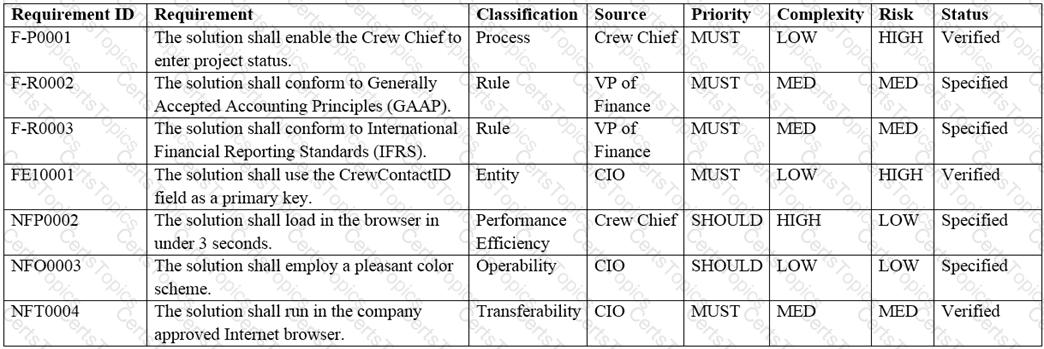Company A is a nation-wide leader in commercial demolition. Having just celebrated its 100th year of operations, the company decided to begin doing work internationally. The current system used for reporting company finances is unable to keep pace with the potential demands of doing work in geographically dispersed locations. Therefore, the company decided to replace its client-based Profit & Loss (P&L) reporting system with a more robust, web-based system. This will ensure transparency across the organization and enable better decision making.
The business analyst (BA) at Company A has recently completed several rounds of elicitation to determine the requirements for the new, web-based system. Over 1250 requirements were elicited. An initial Requirements Traceability Matrix (RTM) has been drafted, and a subset of the RTM can be seen below:

While verifying the requirements, the BA notices that Requirement ID NFO0003 does not meet the "unambiguous" or the "testable" characteristics of requirements quality. The BA plans to re-write the requirement.
Which of the following requirements is both unambiguous and testable?
A business analyst (BA) has just completed a number of elicitation activities and is preparing to review the stated requirements. As part of this, the BA is checking the compliance of the stated requirements with organizational standards for business analysis.
What state is the BA attempting to move the requirements into?
Which of the following processes measures the maturity level of the security program?
While reviewing a subset of requirements with stakeholders, a business analyst (BA) finds a requirement that does not deliver benefit to any of the stakeholders. After much discussion, the stakeholders decide that the requirement does not align with the solution scope.
What recommendation will the BA make?